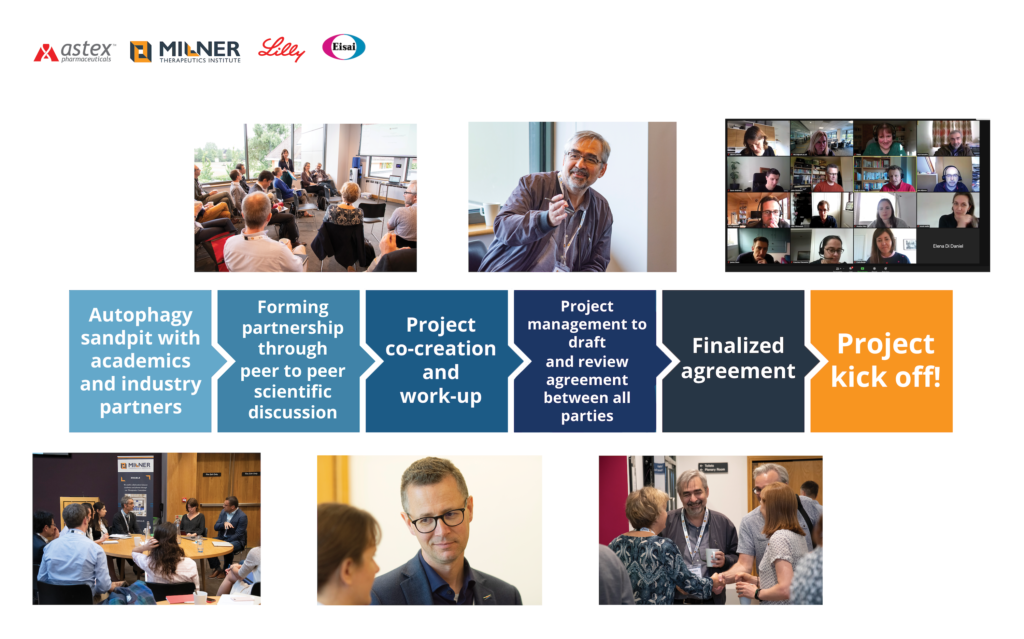We are excited to announce a new collaboration which has been set up through the Milner Therapeutics Consortium to investigate autophagy targets in neurodegeneration. This is the first such project to bring together multiple academic groups across the University and Babraham Institute to work with three of our pharma partner companies — Astex, Eisai and Eli Lilly and Company.
Autophagy is a major protein and organelle recycling and degradation pathway and is increasingly being targeted as a therapeutic strategy in neurodegeneration. But the development of clinically viable modulators of autophagy requires better understanding of target relevance across mechanistic and disease models. This project aims to tackle this, drawing on the combined experience of an academic-industry team to assess a number of targets in complementary compound and genetic screening assays and neuronal disease models, to uncover robust targets for prioritization.
Arising from an industry-led workshop that brought together key academic and industry opinion leaders within the Milner Therapeutics Consortium, this project includes academic teams from three institutes across Cambridge – John Skidmore’s team at the ALBORADA Drug Discovery Institute, Nicholas Ktistakis’s group at the Babraham Institute and Alex Whitworth’s group at the MRC Mitochondrial Biology Unit – each of whom have complementary expertise in autophagy mechanisms and models. They will work in close consultation with industry scientists at the three companies, who each bring unique know-how from internal research programmes in neurodegeneration.
“Effective collaboration between labs in academia and industry is critical for the successful translation of basic science and this project brings together experts with deep understanding of autophagy, neurodegeneration and drug discovery to address an important question.” says John Skidmore, Chief Scientific Officer at the ALBORADA Drug Discovery Institute. “It’s been exciting to work with this team, and to see the progress we can make through our combined insights. This project will help us to pinpoint those targets that have broad and robust effects and thus greater therapeutic promise”.

